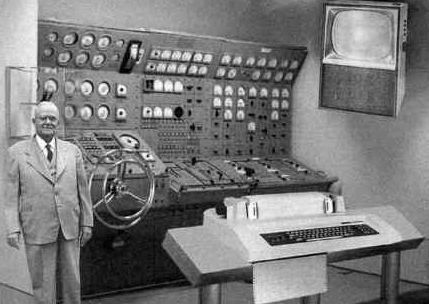9 Tips for Videos and Hard Drives
 I just counted. Nine hard drives. If you create videos, you probably have at least one or two backup drives.
I just counted. Nine hard drives. If you create videos, you probably have at least one or two backup drives.
So keeping with Number 9, here are 9 tips about hard drives that I’ve learned the hard way.
- Don’t trust them. I had a Seagate crash and burn on me once, and lost some of my favorite videos. Fortunately I have some of the videos in lower resolution on other drives. Three stores couldn’t recover it and I was too mad at Seagate to get a refund or ever buy another one again. Then I broke my rule and bought another one because it was so cheap. Neither my PC nor my Mac recognize it. Desk weight. Dear Seagate: eat me.
- Buy only what you need now. The prices drop frequently, so if you rush to buy the terabyte drive you’ll find out it’s 30% less expensive by the time you actually need the space.
- Stay slightly behind what’s “hot” for the best deals. The real hard drive bargains now are on the 500 gig external drives. I like the Western Digital “My Book” drives (Amazon has a 500 gig one for $150). Call me crazy but I’d rather have too many drives because if one of them Seagates I know I won’t lose more than a few weeks of videos.
- Never pay more than 50 cents per gig, and shoot for 25 cents. So if it’s a 500 gig drive you want to shoot for between $150 and $250.
- Shop around. Last night I bought a SADA drive at BestBuy for $120, and while searching for installation instructions I found it for $75 at one of those “can I trust or not” online stores. So don’t be impulsive like me.
- Export best quality video. I try to save the original files of most of my videos in iMovie, but those can be 3 gigs per video (even if they’re short). So I’ve been saving the CD-ROM quality versions I upload as a backup. BIG mistake. Save a version that’s the highest quality your editing software can export. For the Mac, the difference between “full quality” and CD-ROM quality is day and night when played on a DVD player.
- Save editor file for your favorite videos. If you ever think you’ll need to change the music or condense your video for other mediums, then you absolutely have to save the master version. When I get a request from a network for one of my videos, I sometimes need to tighten them up or remove certain audio (not to mention export them in the highest quality I can). Note that iMovie may hide your footage and let you delete the clips you don’t use. But it secretly maintains the full version of each clip so that you can “return to original.” There’s a complex workaround, but it plays havoc on your file sizes. It’s worth ensuring your input settings break video into chunks no longer than 5 minutes.
- Keep your software and footage on separate drives. An editing pro told me that I can get faster performance by running my software from the main hard drive, and saving my projects on a separate internal drive. I haven’t noticed if that works, but I’ll take his word for it.
- Keep your main drive free of lots of space. My editing software runs radically slower if there’s not plenty of room on the drive.
Hope this helps, and look forward to your tips. Especially from Windows users since some of this applies just to Mac folks.

Thanks for reminding me. Uh, the only harddrive I ever lost data on was a Western Digital.
I store all my porn on my external hard drive.
Dear Nalts:
Will you make a favorble video for us? As a parent myself I love your videos and frequently watch them in between board meetings. I know you have had a bad experince but maybe you could try and find a favoriable way to postion our product anway, after all Segate drives are good enough for You Tube.
Bill Watkins
Dont buy a Hewlett packard pc,hard drive or anything else! I unplugged my 10 month old HP desktop(because the dvd writer never works,and the pc is very loud and actually rattles),im now using my 5+ year old sony vaio,which still works like a dream!
Due to the speed advantages of a RAID 0 array, I use one for holding any videos I’m currently working on – I just used a pair of 80 GiB SATAII drives I had handy. Since RAID 0 is fast but inherently can’t be trusted for archiving, I have a 500 GiB drive (for now, until I can get something bigger). Everything gets backed up to DVD and the disks are checked yearly to make sure they’re still readable since the media tends to crap out if it’s stored too long. So far, I haven’t had a HD failure, but I know it’s a matter of time and I don’t want to lose anything I’ve already shot.
http://www.boingboing.net/2007/12/05/drive-cradle-makes-i.html
This device looks pretty sweet. You can plunk your drives in an out of this cradle like you’d pop SD cards out of a reader. There’s no need to wrestle with plugs and screws. Me want.